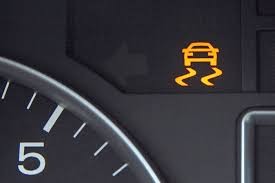
Description and principle of operation of the stability control system ESC
Content
The ESC stability control system is an electro-hydraulic active safety system, the main purpose of which is to prevent the car from skidding, that is, to prevent deviations from the set trajectory during sharp maneuvers. ESC has another name - "dynamic stabilization system". The abbreviation ESC stands for Electronic Stability Control - electronic stability control (ESC). The Stability Assist is a comprehensive system that encompasses the capabilities of ABS and TCS. Let's consider the principle of operation of the system, its main components, as well as the positive and negative aspects of operation.
The principle of the system
Let's take a look at the principle of operation of the ESC using the example of the ESP (Electronic Stability Program) system from Bosch, which has been installed on cars since 1995.
The most important thing for ESP is to correctly determine the moment of the onset of an uncontrolled (emergency) situation. While driving, the stabilization system continuously compares the parameters of the vehicle's movement and the driver's actions. The system begins to work if the actions of the person behind the wheel become different from the actual parameters of the movement of the car. For example, a sharp turn of the steering wheel at a large angle.
The active safety system can stabilize the movement of the vehicle in several ways:
- by braking certain wheels;
- change in engine torque;
- changing the angle of rotation of the front wheels (if an active steering system is installed);
- a change in the degree of damping of the shock absorbers (if an adaptive suspension is installed).
The stability control system does not allow the vehicle to go beyond the predetermined turning trajectory. If the sensors detect understeer, then the ESP brakes the rear inner wheel and also changes the engine torque. If oversteer is detected, the system will brake the front outer wheel and also vary the torque.
To brake the wheels, ESP uses the ABS system on which it is built. The cycle of work includes three stages: increasing pressure, maintaining pressure, relieving pressure in the braking system.
The engine torque is changed by the dynamic stabilization system in the following ways:
- canceling a gear change in an automatic gearbox;
- missed fuel injection;
- changing the ignition timing;
- changing the angle of the throttle valve;
- misfire;
- redistribution of torque along the axles (on vehicles with all-wheel drive).
Device and main components
The stability control system is a combination of simpler systems: ABS (prevents the brakes from locking), EBD (distributes braking forces), EDS (electronically locks the differential), TCS (prevents wheel spin).
The dynamic stabilization system includes a set of sensors, an electronic control unit (ECU) and an actuator - a hydraulic unit.
Sensors monitor certain parameters of the vehicle's movement and transmit them to the control unit. With the help of sensors, ESC evaluates the actions of the person behind the wheel, as well as the parameters of the car's movement.
The stability control system uses brake pressure and steering wheel angle sensors and a brake light switch to evaluate a person's driving behavior. Vehicle movement parameters are monitored by sensors for brake pressure, wheel speed, vehicle angular speed, longitudinal and lateral acceleration.
Based on the data received from the sensors, the control unit generates control signals for the actuators of the systems that are part of the ESC. ECU commands receive:
- inlet and outlet anti-lock braking system valves;
- high pressure valves and traction control changeover valves;
- warning lamps for ABS, ESP and brake system.
During operation, the ECU interacts with the automatic transmission control unit, as well as with the engine control unit. The control unit not only receives signals from these systems, but also generates control actions for their elements.
Disable ESC
If the dynamic stabilization system "interferes" with the driver while driving, then it can be disabled. Usually there is a dedicated button on the dashboard for these purposes. It is recommended to disable ESC in the following cases:
- when using a small spare wheel (stowaway);
- when using wheels of different diameters;
- when driving on grass, uneven ice, off-road, sand;
- when riding with snow chains;
- during the rocking of the car, which is stuck in snow / mud;
- when testing the machine on a dynamic stand.
Advantages and disadvantages of the system
Let's consider the pros and cons of using a dynamic stabilization system. ESC advantages:
- helps to keep the car within a given trajectory;
- prevents the car from overturning;
- road train stabilization;
- prevents collisions.
Disadvantages:
- esc needs to be disabled in certain situations;
- ineffective at high speeds and small turning radii.
Application
In Canada, the USA and the countries of the European Union, since 2011, the stability control system has been installed on all passenger cars. Note that the system names differ depending on the manufacturer. The abbreviation ESC is used on Kia, Hyundai, Honda vehicles; ESP (Electronic Stability Program) - on many cars in Europe and the United States; VSC (Vehicle Stability Control) on Toyota vehicles; DSC (Dynamic Stability Control) system on Land Rover, BMW, Jaguar cars.
Dynamic Stability Assist is a great helper on the road, especially for inexperienced drivers. Do not forget that the possibilities of electronics are also not limitless. The system significantly reduces the likelihood of an accident in many cases, but the driver should never lose vigilance.

